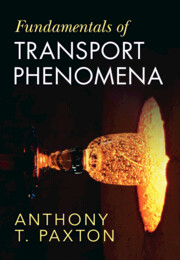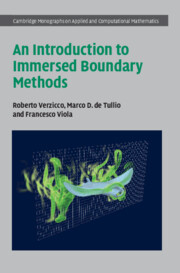Refine search
Actions for selected content:
5487 results in Thermal-fluids engineering

Fundamentals of Transport Phenomena
-
- Published online:
- 04 November 2025
- Print publication:
- 23 October 2025

An Introduction to Immersed Boundary Methods
-
- Published online:
- 30 October 2025
- Print publication:
- 06 November 2025
List of Symbols
-
- Book:
- Fundamentals of Transport Phenomena
- Published online:
- 04 November 2025
- Print publication:
- 23 October 2025, pp xv-xviii
-
- Chapter
- Export citation
7 - Diffusion in the Solid State
-
- Book:
- Fundamentals of Transport Phenomena
- Published online:
- 04 November 2025
- Print publication:
- 23 October 2025, pp 199-238
-
- Chapter
- Export citation
9 - Dimensional Analysis
-
- Book:
- Fundamentals of Transport Phenomena
- Published online:
- 04 November 2025
- Print publication:
- 23 October 2025, pp 253-270
-
- Chapter
- Export citation
5 - Bernoulli’s Equation, Vorticity and Inviscid Flow
-
- Book:
- Fundamentals of Transport Phenomena
- Published online:
- 04 November 2025
- Print publication:
- 23 October 2025, pp 142-168
-
- Chapter
- Export citation
3 - Outline of Continuum Mechanics and Fluid Dynamics
-
- Book:
- Fundamentals of Transport Phenomena
- Published online:
- 04 November 2025
- Print publication:
- 23 October 2025, pp 26-70
-
- Chapter
- Export citation
Contents
-
- Book:
- Fundamentals of Transport Phenomena
- Published online:
- 04 November 2025
- Print publication:
- 23 October 2025, pp vii-xii
-
- Chapter
- Export citation
4 - Conservation and Dynamics in Fluids
-
- Book:
- Fundamentals of Transport Phenomena
- Published online:
- 04 November 2025
- Print publication:
- 23 October 2025, pp 71-141
-
- Chapter
- Export citation
2 - Hydrostatics
-
- Book:
- Fundamentals of Transport Phenomena
- Published online:
- 04 November 2025
- Print publication:
- 23 October 2025, pp 8-25
-
- Chapter
- Export citation
8 - Heat Transfer
-
- Book:
- Fundamentals of Transport Phenomena
- Published online:
- 04 November 2025
- Print publication:
- 23 October 2025, pp 239-252
-
- Chapter
- Export citation
Frontmatter
-
- Book:
- Fundamentals of Transport Phenomena
- Published online:
- 04 November 2025
- Print publication:
- 23 October 2025, pp i-iv
-
- Chapter
- Export citation
Preface
-
- Book:
- Fundamentals of Transport Phenomena
- Published online:
- 04 November 2025
- Print publication:
- 23 October 2025, pp xiii-xiv
-
- Chapter
- Export citation
1 - Introduction
-
- Book:
- Fundamentals of Transport Phenomena
- Published online:
- 04 November 2025
- Print publication:
- 23 October 2025, pp 1-7
-
- Chapter
- Export citation
Dedication
-
- Book:
- Fundamentals of Transport Phenomena
- Published online:
- 04 November 2025
- Print publication:
- 23 October 2025, pp v-vi
-
- Chapter
- Export citation
Index
-
- Book:
- Fundamentals of Transport Phenomena
- Published online:
- 04 November 2025
- Print publication:
- 23 October 2025, pp 271-274
-
- Chapter
- Export citation
6 - Mass Transfer in Fluids – Chemical and Materials Processing
-
- Book:
- Fundamentals of Transport Phenomena
- Published online:
- 04 November 2025
- Print publication:
- 23 October 2025, pp 169-198
-
- Chapter
- Export citation
2 - The Evolution of Ship Structures from Antiquity to the Present Day
-
- Book:
- Global Strength of Ships
- Published online:
- 20 March 2025
- Print publication:
- 03 April 2025, pp 46-88
-
- Chapter
- Export citation
13 - Hull Girder Strength Assessment Using the Finite Element Method
-
- Book:
- Global Strength of Ships
- Published online:
- 20 March 2025
- Print publication:
- 03 April 2025, pp 628-671
-
- Chapter
- Export citation
1 - Ship Structures and Structural Design Practice
-
- Book:
- Global Strength of Ships
- Published online:
- 20 March 2025
- Print publication:
- 03 April 2025, pp 1-45
-
- Chapter
- Export citation
